The DS75CLHV is one of four ProModeler takes on the sub-micro class. The DS75CLHV and DS105CLHV are sister servos (same-same except motor) while the DS125CLHV is a costlier all-alloy version, plus we offer the the DS125CLHV Brass Monkey for marine and specialize crawling applications. We'll discuss the DS75 and DS105 together. First, the product nomenclature is deciphered as;
- DS=Digital Servo
- 75 = torque rating in oz-in
- CL = Coreless motor
- HV = High Voltage (up to 8.4V)
Built for pure speed, the DS75 outputs 75oz-in while transiting in a blazing 0.079sec/60° and the DS105 is more powerful at 105oz-in (but a tick slower at 0.097sec/60°).
Either of these servos handily outperform class standbys like the Hitec HS-65MG (31oz-in and 0.11sec/60°) or digital version like HS-5070MH (52oz-in and 0.12sec/60°). We'll touch on when to use each, in a moment.

Our remit was simple . . . produce the best sub-micro servos in the world. And we believe we've especially succeeded with this pair because of the great balance between speed/torque and price.
If you're looking for cheaper, this is not the place for you. If you're looking for better made, you're definitely in the right place because we specialize in servos for the uncompromising modeler. Meaning t- hose whose tastes run toward hard use like steering a micro crawler, flying aggressive fixed wing and rotary wing 3D maneuvers. So if you've tried ordinary hobby grade offerings and are dissatisfied, you've found the sub-micros you want, the ones made with the right stuff.
Maybe you fly top quality foam jets from the likes of Freewing. A good friend ordered one of these, flew it once and called for my servo recommendation. After adding them to his cart he made a pithy observation; 'I'm spending nearly as much for servos as for the whole damned model! This would be positively stupid if it weren't because it flies like crap with the stock servos!'. He made a valid point.
The reasons for this servo's popularity principally has to do with its build quality and astonishing torque as the DS75 make 2X the torque of ordinary hobby-grade products, and the DS105 about 3X.
For surface models, this makes it ideal for the dig and shift servos in model trucks like a Traxxas TRX4, as ell as steering of the popular Axial SCX24 and Traxxas TRX-4M.
For fixed wing models, foam jets from Freewing, and extreme aerobatic 48" models from the likes of Extreme Flight and AJ's Models (plus many others). But take note, those who fly those 48" models really hard typically use increase the size of the servo opening and instead, use our DS100 for the elevator instead of a submicro - heads up, eh?
And no, nothing to do with the DS75 having crappy gears and more to do with the loads being imposed on it by some regimens of flight being just too much, e.g. some pilots fly the little 3D models so hard they can explore the actual limits of the product and break it in the air. Fair warning, OK?

Overall this is quite the servo, especially for modelers who've been around a while and realize not long ago standard size servos like the Futaba S-148 (42oz-in and 0.22sec/60°) were doing 90% of the heavy lifting in the radio control world. Yet now - in a sub-micro package - you are being offered a servo that's about 2X as strong, nearly 3X faster, but that only weighs about 1/3 as much! It's really quite the tour de force in miniaturization.
Don't believe us? Survey similar size competitors. What will you find? Nothing as advanced as what this servo represents. Bottom line? You get more for your money from ProModeler. Add to it the recognition the DS75CLHV is flat out built to a much higher standard with better component parts.
The build standards
For example, there's an aluminum center case (where they use plastic). We also opted for steel gears (where competitors use aluminum and brass). Then for increased durability, we reinforce the polymer case with SAE65 bronze hard points (while competitors are content with letting the metal gear shafts fit directly into plastic bores that quickly wallow out under load). What the bronze inserts bring to the game is enhanced gear mesh, which stays constant over time. But there's more because there are also 13 o-rings, which seal it from the environment. Plus a conformal coating on the PCB, which adds protection against vibrations. In the end you get tank-like durability built on a sub micro scale!
And the harder you look the more there is to see. For example, take note of how that center case isn't merely made of aluminum, perhaps a cheap extrusion, but has actually been 100% CNC-machined. Where the other guys use pass through bolt holes, this one has been tapped for 10 machine-screws to keep them as short and stiff as possible. Plus there's an added advantage of hogging the case from a solid billet of 6061-T6 aircraft aluminum - it's those cooling fins.
The cooling fins are the key to the high performance because without them the motor wouldn't survive when you're really pushing things hard. After all, heat is the enemy of all things electronic, right? So keeping the motor cool is a fundamental aspect of achieving high performance. But the other guys skip this! Perhaps because it's hard to maintain the tolerances. Or maybe it's because this is expensive to do (it doesn't matter because those of you who want the very best available immediately recognize these for what they are, excuses).
Then to help keep the weight down, we use polymer components for some of the case. However, just as with our larger servos, we reinforce plastic bores where the highest stresses are created by the steel gear shafts. How? Through the use of Swiss-machined SAE65 bronze inserts. This added reinforcement is another reason why you get more for your money with ProModeler. And it's another part of why we earn a solid reputation for ruggedness and dependability. Note; we work to earn it with every servo, but with the DS75CLHV you get a level of precision and toughness just not found in other brands of servos designed to such a miniature scale.
Outputting +4.5 pounds of force there's basically nothing else like it in the whole world (unless you look at the sister servo, the DS105 and either DS125) so if you love small models 'and' have become disenchanted by the el cheapo type sub-micro servo offerings (like what's found in otherwise quite nice ARF foamies), then this is the best upgrade you can make! Moreover, if your tastes run to extreme performance wood/carbon fiber air frames, then getting the best air frames only to equip it with inferior servos really makes no sense. If you want sub-micro servos built to the highest standards, then the DS75CLHV is the right servo for you.
Note the tabs above.
- Specs - useful if you're curious about the raw numbers, dimensions, etc.
- Comparison - a guide regarding how it compares to other products.
- TL;DR - gets down into the weeds with the nitty gritty - it's for the detail-oriented.
- Reviews - short and sweet with real names and places - no BS.

SUMMARY:
Part of what makes the ProModeler DS75CLHV submicro better than competitors is that unlike hobby-grade
servos, it's built to meet military standards (and meets these requirements).
MIL-STD-810G-Part 16
- Shock - Test Method 516.6
- Vibration - Test Method 514.6
- Rain - Test Method 514.5

Note1
These are tiny servos with even tinier gears and operating them manually via the servo horn may damage them. This damage is not covered by warranty. Please do not treat these like a standard size servos. If you fit a servo arm and zing is back and forth to feel the compression (just kidding) and damage it, it's on you. You've been warned.
Note 2
Operating voltage is 4.8-8.4V, but optimal performance is obtained with a 2S LiPo instead of a BEC. This is because LiPos deliver the required current without voltage spikes, noise, or otherwise adversely affecting the delicate avionics (15C or better is recommended). After all, synthetic orange colored Tang may have gone to the moon, but it doesn't compare to freshly squeezed orange juice. Same thing when it comes to feeding your avionics! Learn more by reviewing these articles;
. . . major point being, individually these things can draw a bit over an amp so if you have a model jet with 9-10 of them, or a 3D model with four, which is not hard at all, then exceeding the 3.5A rating of the connector going between speed control and receiver (the throttle lead is how the receiver is back-fed power from the ESC through the BEC-circuit) then it's pretty easy to exceed what is safe. Heads up, OK?
Note 3
We're often asked why we say not to use this for the throttle servo of model airplanes/boats/helicopters/trucks since a carburetor only needs maybe 10oz-in of torque. The reason has to do with the tiny component size and withstanding vibration. Even when we protect the PCB with potting compound, what we can't protect is the potentiometer because it directly links mechanically to the output gear. So even when protected with rubber isolation (which we offer as an option but don't supply as standard equipment since these things mostly go into small electric models with relatively low vibration levels), an internal combustion engine (gasoline or nitro, no matter) is feeding vibration into the pot via the throttle pushrod. This *will* destroy the servo - and really really quickly. Point being, we have too much experience with this and thus, while we love you as a customer, we don't love you enough to be warrantying what we know will break. Thus, we'd rather warn you off the product thereby risking the sale from the get go, capisci? What would we suggest instead? Maybe a DS100 is the better alternative but in truth, we'd really rather guide you to a standard size DS90DLHV equipped with a PDRS105 servo horn. Review this article to learn more.
. . . and note, while this is aimed at modelers with gasoline engines, the same holds true for cars and trucks, boats, and helicopters with high RPM nitro engines which typically also use a very short 1/16" steel pushrod to make the linkage. Trust us we know what we're talking about . . . please!
Ownership Considerations:
Competition pilots - especially those who fly precise maneuvers - prefer ProModeler servos
because we use MIL-SPEC components (plus a genuine Japanese Nobel-brand
potentiometer). Others? They're satisfied with a cheap clone, a magnetic/
inductive pickup, or some other cost saving variation of a potentiometer. Also, and especially important for IMAC and pattern competitors who fly a lot and thus, go through and R&R their servos each winter, we offer spares. And not just the case and gears like everybody else, but the spares that count - to include the potentiometer and the servo motor. Plus little things like o-rings, bolts, and even the label. So instead of being forced to return your servos for service, if you can DIY, you can save money!
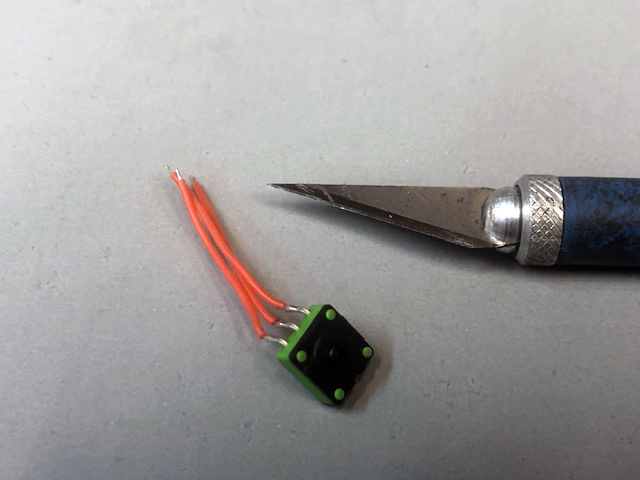
Why the emphasis on competition pilots? It's because these folks fly 30 times a week (and do it week-in, and week-out), e.g. it's de rigueur
to practice 3X a week and twice on weekends. They work servos harder than mere mortals and it's because of them that we make the rugged foundation of this marvel a CNC-machined case. Beginning life as a solid billet of 6061-T6 aircraft aluminum, when we're done it's a work of art.
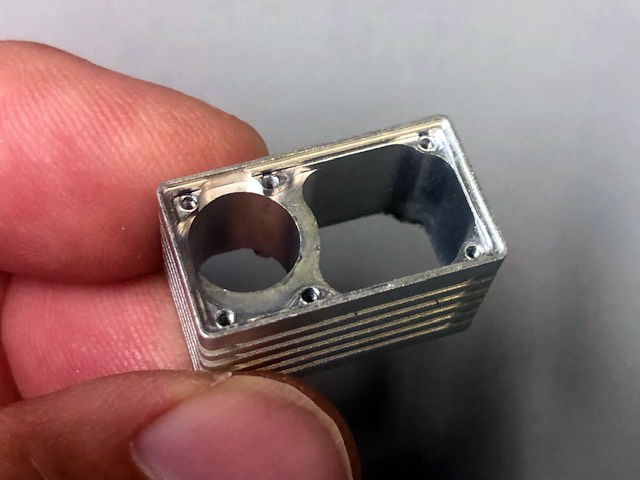
In fact, the DS75CLHV servo is
ideal for 48" 3D models, but because it outputs 5+ lbs of
force, then it means you could actually install it into a .40- .61 size model, maybe even larger depending on how you fly! At its heart is a incredible creation in miniaturization, a high performance coreless motor!
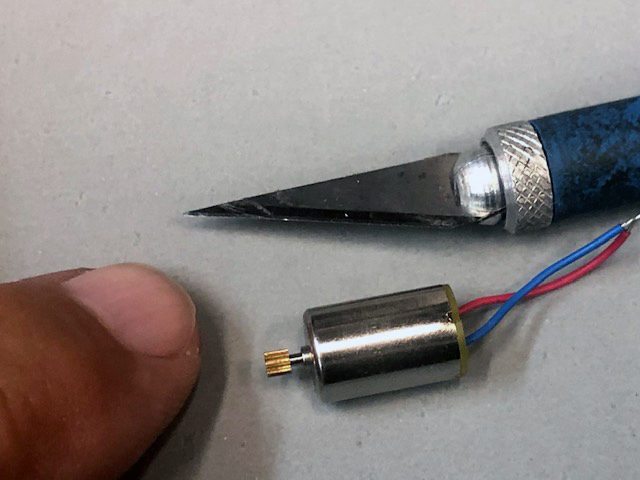
Basically, this servo has been expressly
crafted to meet your needs whether you're a beginner looking for your
first set of high quality submicro servos, or an experienced sportsman who attends
several fun flies each summer, or an
all out pro.

DETAILS:
If
you're an electrical engineer you'll immediately notice we protect the PCB
from vibration with a conformal
coating instead of a little square of foam rubber. Referred to as
potting compound on the civilian side, we call it monkey-snot because
it's such a sticky mess to apply. This stuff is applied to the PCB and
oozes between components and once it sets is what lets our servos thrive
in harsh high-vibration environments. This is an aerospace-grade
technique and it makes ProModeler servos more valuable.Anyway, this is without question the smallest motherboard we've ever created and it's so small it about the size of you pinkie's fingernail, maybe smaller!
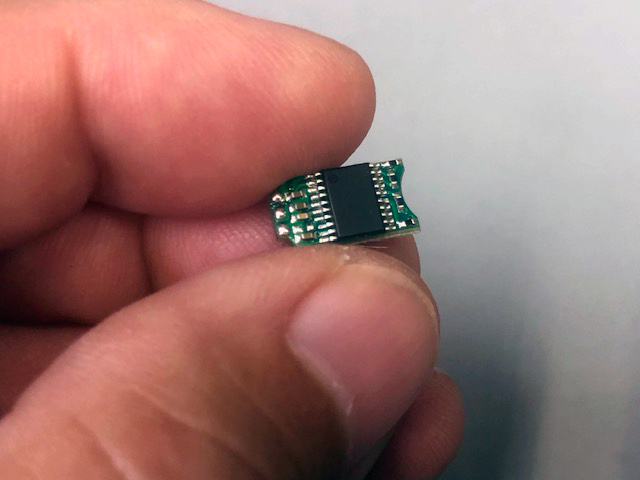

Another area where a ProModeler servos stand out is protection from
environmental contaminants, typically dust,
water, and exhaust-oil. The assembly of the DS75CLHV is protected with
o-rings - basically at every opening - even beneath the screw heads! We
all know how pernicious water can be with respect to penetrating where
we don't want it so this detail helps make ProModeler servos better. It's a no brainer . . . and these o-rings are microscopic in size!
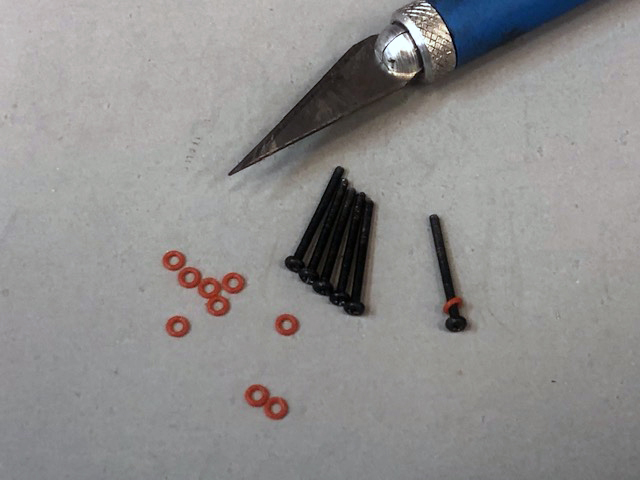

As you learn how well the DS75CLHV servo is made you might reasonably expect this to
be our most expensive servo, but it's not. Instead, this is our best
submicro general purpose servo. It's the servo that expert modelers select for a
wide variety of sport and scale models.
For example, savvy pilots - ones who grok what
Eastwood meant (in the role of Callahan in Magnum Force) when he said,
"A man's got
to know his limitations."
- will opt to use these for models as large as a 60".
but they will shine in 3D at the 48" class.

Ever taken a servo apart? The metal gears rotate on steel shafts. The end of the shaft fits in a hole in the case, what's called a pocket. In cheapo servos, the steel fits into a plastic pocket but in a ProModeler servo, there's a brass insert reinforcing the plastic. When you pay a little bit more for a ProModeler servo, this is part of the reason why. As long as it moves, we know modelers won't throw anything away . . . so we produce ProModeler servos with the expectation of a service life measured in decades!
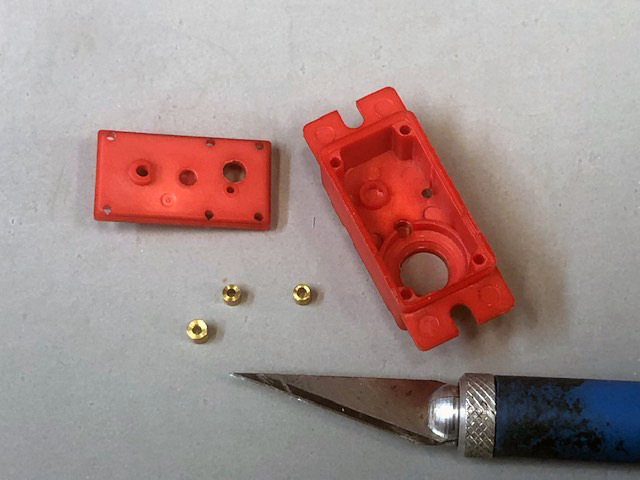
USE CASES:
So
who
uses these servos? In light of the MIL-SPEC and MIL-STANDARD test
methods, you won't
be surprised to learn the government has driven a lot of our product
development. They're our biggest customer. So are universities, plus
commercial UAS operators in agricultural and pipeline inspection ops.
We've branched out to the civilian world, so our customers now include
hobbyists.
This customer is often a highly experienced modeler,
but also includes savvy beginners who realize just because the servo
will first be used in 40-size trainer doesn't mean you throw them away
when you transition to a higher performance model. Anyway, you may use
this servo in a wide array of sport
and scale models - with wingspans ranging from about 48" on up. And
when we say 'on up', we're not kidding because the models in which the
DS75CLHV may appear
can be spectacular!

SUMMARY:
At
heart, servos offering 75oz-in of torque and transiting in the
0.08sec/60° range are uncommon. We believe finding another that
offer everything these do is impossible to the point we believe there
isn't a better servo available for any amount of money on the planet.
Period. No other servo offers
this level of power, precision, quality, plus tank-like durability (and
nobody else lets you completely
rebuild them yourself). So if you're
an experienced modeler, and if you are mechanically 'ept' this is yet
another consideration (if you can do
basic soldering but naturally, you can also send them to us for R&R
if
you aren't comfortable doing these things).
Better
components. Better servos. The formula is simple. Decisions regarding
what goes into ProModeler servos aren't made in accounting to optimize
price and profit, but in engineering. Simply put, this is the best
servo available for the money. Add a set to your cart. Do it now because
you're going to love them!
